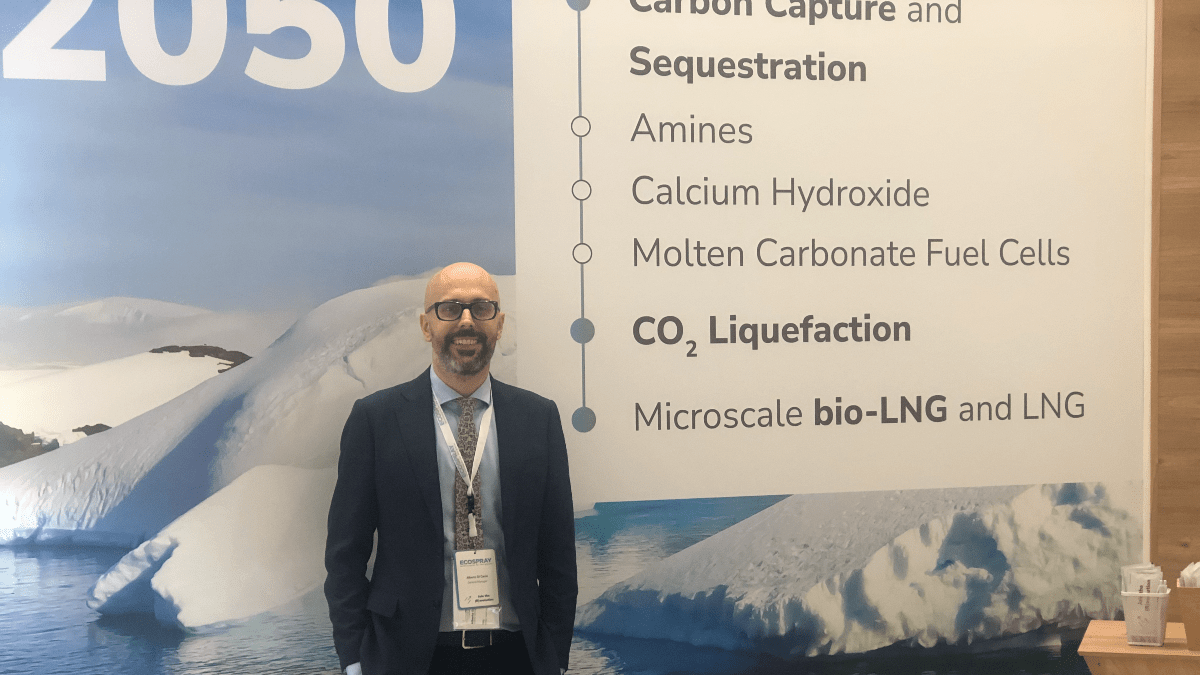Class society RINA has confirmed CO2 reductions of 20% can be achieved by carbon capture system based on new molten carbonate fuel cell (MCFC) technology
The confirmation by the Italian classification society matches initial projections by developer Ecospray, and follows two months of assessment. RINA and Ecospray signed a memorandum of understanding (MoU) in July.
RINA assessed the CO2 lifecycle, confirming a compact 500-kW MCFC, when fed with carbon-negative bioLNG (in which the CO2 is captured during the production process) can cut the CO2 equivalent emissions of a 10-MW engine by 20%, as calculated and stated by Ecospray. The process combines the effect of using bioLNG, for which the CO2 has been captured, with the high-efficiency and carbon-negative power generation capability of the system ’MCFC fuel cell with CO2 capturing feature’, a peculiarity of this specific type of fuel cell granted by its specific electrochemical composition.
RINA’s calculations considered the complete CO2 lifecycle analysis, resulting from ship engine operation, bioLNG production, bioLNG processing through a steam reformer to obtain H2 rich gas, MCFC reaction and the capture and liquefaction of the CO2.
The MoU also included the assessment of feasibility of the installation of MCFC technologies on ships.
Part of the Carnival Group since 2013, Ecospray said the MCFC can also be fuelled with hydrogen, methanol, ammonia and fossil LNG.
Carbon capture with MCFC: how it works
This is one of three types of carbon capture system being developed Ecospray. Other processes being researched are amines and calcium hydroxide.
Ecospray general manager Dr Alberto Di Cecio spoke to Riviera Maritime Media about the company’s efforts on shipboard carbon capture and bioLNG production at SMM 2022 in Hamburg in September. You can listen to the podcast interview here.
When asked why the company is working on three different carbon capture technologies during the interview, Dr Di Cecio said, “The idea behind this is to have the right solution for any type of ship”. Ecospray expects to deploy its first system this year in a pilot project, with commercial availability by 2023.
Technologies based on MCFC enable the capture of CO2 at the same time as energy production. While a technologically complex solution, this provides the best results in terms of reductions in emissions, while lowering opex, said the company. The technology can be used on two-stroke and four-stroke engines and with all fuels, HFO and LNG.
The Department of Civil, Chemical and Environmental Engineering of the University of Genoa collaborated with Ecospray for the MCFC technology, whose development began in 2020.
The next step
The next step for Ecospray is testing MCFC technologies at its lab, equipped with engine, DeSOx scrubber and wet electrostatic precipitator, with the industrialisation stage expected in 2024 and market launch in 2025.
“Ecospray continues working on several shipping decarbonisation projects, focusing on two main aspects: carbon capture technologies and bioLNG production,” said the company’s marine business unit director Filippo Lossani.
“In our view, the bioLNG is already playing an important role in road transport but will have an ever-increasing role in shipping, beside the LNG,” said Mr Lossani. The next step in advancing MCFC-based carbon capture technology would be an approval in principle.
RINA executive vice president marine Giosuè Vezzuto, said, “The results achieved by Ecospray are the demonstration that systems and technologies for achieving the CO2 reduction goals set by regulators are being developed and introduced to the market.”






